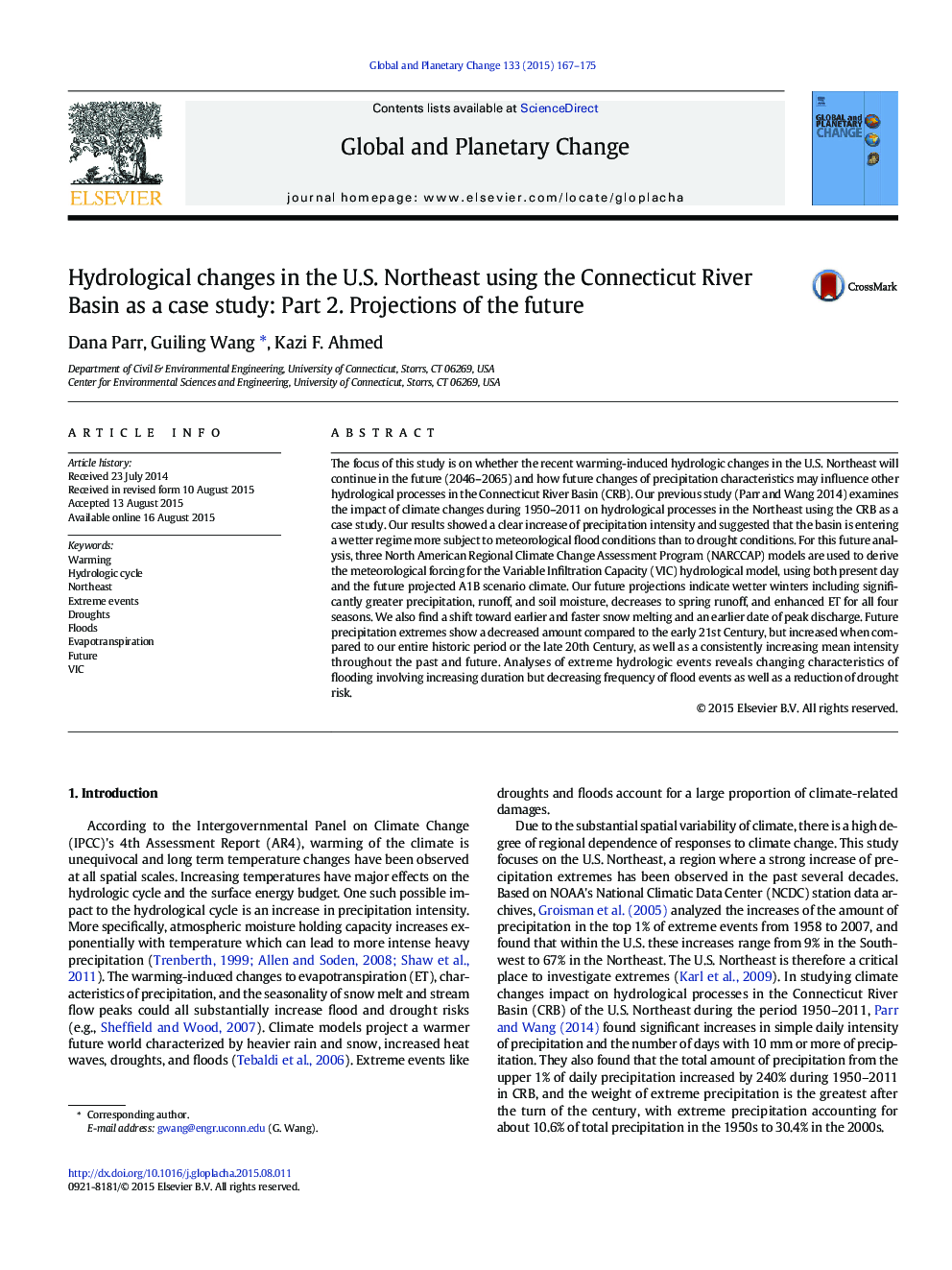| Article ID | Journal | Published Year | Pages | File Type |
|---|---|---|---|---|
| 6348059 | Global and Planetary Change | 2015 | 9 Pages |
Abstract
The focus of this study is on whether the recent warming-induced hydrologic changes in the U.S. Northeast will continue in the future (2046-2065) and how future changes of precipitation characteristics may influence other hydrological processes in the Connecticut River Basin (CRB). Our previous study (Parr and Wang 2014) examines the impact of climate changes during 1950-2011 on hydrological processes in the Northeast using the CRB as a case study. Our results showed a clear increase of precipitation intensity and suggested that the basin is entering a wetter regime more subject to meteorological flood conditions than to drought conditions. For this future analysis, three North American Regional Climate Change Assessment Program (NARCCAP) models are used to derive the meteorological forcing for the Variable Infiltration Capacity (VIC) hydrological model, using both present day and the future projected A1B scenario climate. Our future projections indicate wetter winters including significantly greater precipitation, runoff, and soil moisture, decreases to spring runoff, and enhanced ET for all four seasons. We also find a shift toward earlier and faster snow melting and an earlier date of peak discharge. Future precipitation extremes show a decreased amount compared to the early 21st Century, but increased when compared to our entire historic period or the late 20th Century, as well as a consistently increasing mean intensity throughout the past and future. Analyses of extreme hydrologic events reveals changing characteristics of flooding involving increasing duration but decreasing frequency of flood events as well as a reduction of drought risk.
Related Topics
Physical Sciences and Engineering
Earth and Planetary Sciences
Earth-Surface Processes
Authors
Dana Parr, Guiling Wang, Kazi F. Ahmed,
